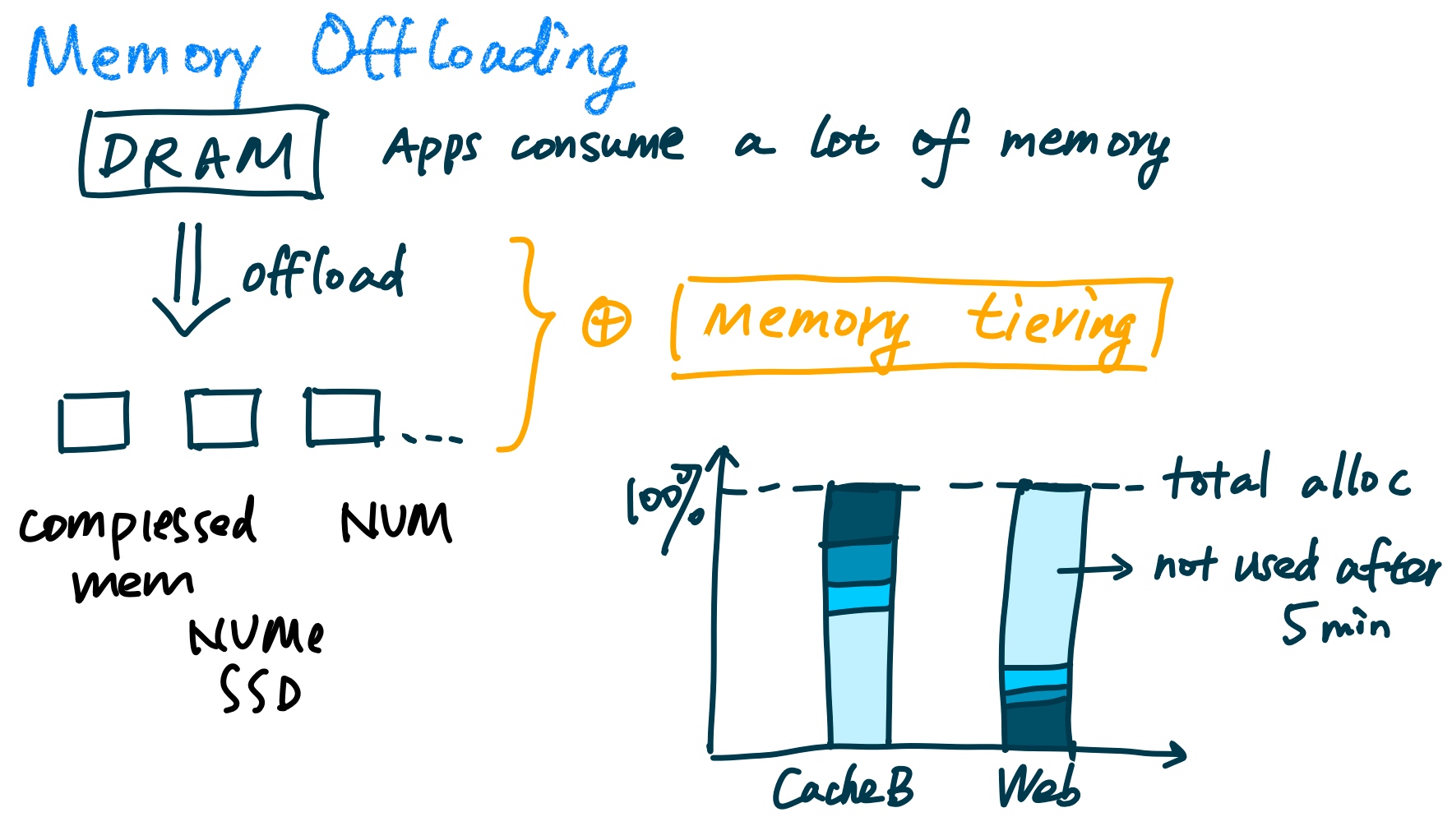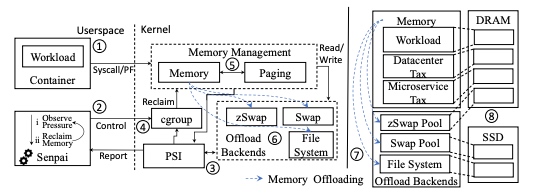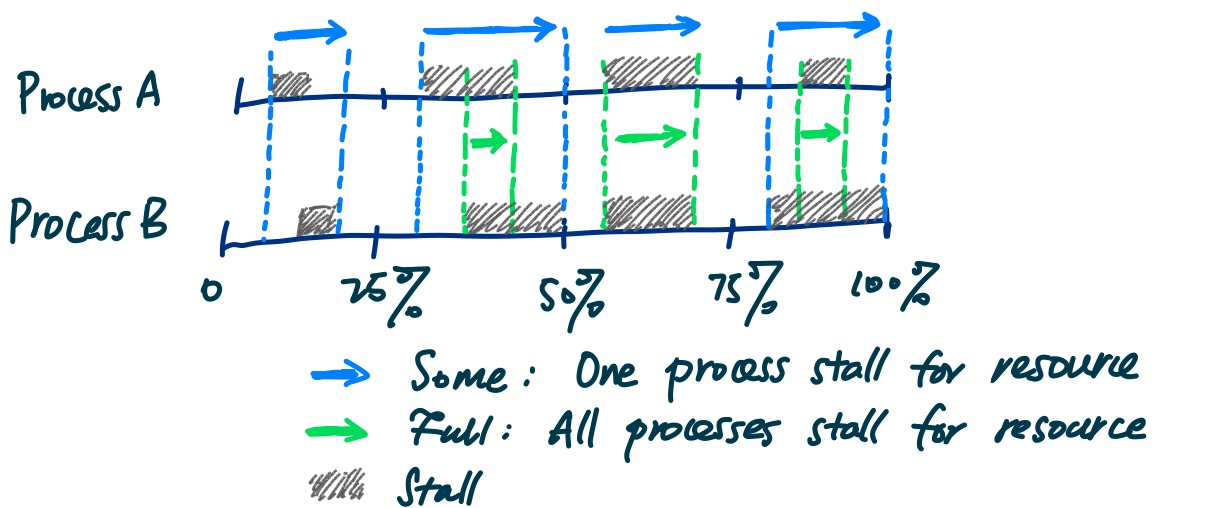去是去不了了, 但是还是看了一下paper list.然后发现只要去就能提前看到paper list,这种传统还挺有意思的。
Rust pitfall of bindgen to Variable Length Data Structure
I was writing a rust version of tokio-rs/io-uring together with @LemonHX. First, I tried the official windows-rs trying to port the Nt API generated from ntdll. But it seems to be recurring efforts by bindgen to c API. Therefore, I bindgen from libwinring with VLDS generated.
Original struct, the flags should not be 0x08 size big. I don't know it's a dump bug or something.
typedef struct _NT_IORING_SUBMISSION_QUEUE
{
/* 0x0000 */ uint32_t Head;
/* 0x0004 */ uint32_t Tail;
/* 0x0008 */ NT_IORING_SQ_FLAGS Flags; /*should be i32 */
/* 0x0010 */ NT_IORING_SQE Entries[];
} NT_IORING_SUBMISSION_QUEUE, * PNT_IORING_SUBMISSION_QUEUE; /* size: 0x0010 */
static_assert (sizeof (NT_IORING_SUBMISSION_QUEUE) == 0x0010, "");
The above struct should be aligned as:

Generated struct
#[repr(C)]
#[derive(Default, Clone, Copy)]
pub struct __IncompleteArrayField<T>(::std::marker::PhantomData<T>, [T; 0]);
impl<T> __IncompleteArrayField<T> {
#[inline]
pub const fn new() -> Self {
__IncompleteArrayField(::std::marker::PhantomData, [])
}
#[inline]
pub fn as_ptr(&self) -> *const T {
self as *const _ as *const T
}
#[inline]
pub fn as_mut_ptr(&mut self) -> *mut T {
self as *mut _ as *mut T
}
#[inline]
pub unsafe fn as_slice(&self, len: usize) -> &[T] {
::std::slice::from_raw_parts(self.as_ptr(), len)
}
#[inline]
pub unsafe fn as_mut_slice(&mut self, len: usize) -> &mut [T] {
::std::slice::from_raw_parts_mut(self.as_mut_ptr(), len)
}
}
#[repr(C)]
#[derive(Clone, Copy)]
pub struct _NT_IORING_SUBMISSION_QUEUE {
pub Head: u32,
pub Tail: u32,
pub Flags: NT_IORING_SQ_FLAGS,
pub Entries: __IncompleteArrayField<NT_IORING_SQE>,
}
The implemented __IncompleteArrayField seems right for its semantics of translating with slice and ptr. However, when I called the NtSubmitIoRing API, the returned data inside Field is random same result no matter moe the fiel d for what distance of Head.
Software-Defined Far Memory in Warehouse-Scale Computers
- design learning-based autotuning to periodically adapt our design to fleet-wide changes without a human in the loop.
- machine learning algorithm called Gaussian Process (GP) Bandit [17, 21, 39].
- we demonstrate that zswap [1], a Linux kernel mechanism that stores memory compressed in DRAM, can be used to implement software-defined far memory that provides tail.
- The control mechanism for far memory in WSCs requires
- tight control over performance slowdowns to meet defined SLOs
- low CPU overhead so as to maximize the TCO savings from far memory.
- The control mechanism for far memory in WSCs requires
- Cold Page Identification Mechanism
- We base this mechanism on prior work [28, 42, 46].
- we design our system to keep the promotion rate below P% of the application’s working set size per minute, which serves as a Service Level Objective (SLO) for far memory performance.
- define the working set size of an application as the total number of pages that are accessed within minimum cold age threshold (120 s in our system).
- The exact value of depends on the performance differ P ence between near memory and far memory. For our deployment, we conducted months-long A/B testing at scale with production workloads and empirically determined P to be 0.2%/min.
- Controlling the Cold Age Threshold, build a for each job in the OS kernel promotion histogram
- our system builds per-job for a given cold page histogram set of predefined cold age thresholds.
- We use Linux’s memory cgroup (memcg) [2] to isolate jobs in our WSC.
- We use the lzo algorithm to achieve low CPU overhead for compression and decompression
- We maintain a global zsmalloc arena per machine, with an explicit compaction interface that can be triggered by the node agent when needed.
- Empirically, there are no gains to be derived by storing zsmalloc payloads larger than 2990 bytes (73% of a 4 KiB x86 page), where metadata overhead becomes higher than savings from compressing the page.
- called [17, 21, 39]. GP Bandit Gaussian Process (GP) Bandit learns the shape of search space and guides parameter search towards the optimal point with the minimal number of trials.
SymSan: Time and Space Efficient Concolic Execution via Dynamic Data-Flow Analysis
在LLVM上用concolic exuction拿到DFG path feed 给fuzzer和santinizer。算法上有很多剪枝优化。还在看实现。
When Prefetching works, when it doesn’t, and why
For the HPC system, prefetching both hw/sw requires sophisticated simulation and measurement to perform better.
The purpose of the author is because first, there is not much explanation of how best to insert prefetch intrinsic. Second, not a good understanding of the complex interactions between hardware prefetching and software prefetching.
The target of soft prefetching is found to be short array streams, irregular memory address patterns, L1 cache miss reduction. There is a positive effect, however, since software prefetching trains hardware prefetching, a further part of the situation is a bad effect. Since stream and stride prefetchers are the only two currently implemented commercially, our hardware prefetching strategies are restricted to those.

As the picture depicted above, the software can easily anticipate array accesses and prefetch data in advance. Stream means accessing data across a single cache line while stride means accessing across more than two cache lines.

For Software Prefetch Intrinsics, temporal for the use of the data to be used again, so the next layer still have to put, such as L1 have to put L2, L3 are put, so that when the data is kicked out of the L1 cache can still be loaded from L2, L3 and None - temporal for the use of the data no longer used, so L1 put on the good, was kicked out will not be loaded from L2, L3.

In the software prefetch distance graph, prefetching data too early will make the data stay in the cache for too long, and the data will be kicked out of the cache before it is really used, while prefetching data too late causes cache miss latency to occur. The equation $D \geq \left. \ \left\lceil \frac{l}{s} \right.\ \right\rceil$ shows, where l is prefetch latency, and s is the length of the shortest path through the loop body. When D (D is a[i+D] of table) is large enough to cover the cache miss latency but when D is too large it may cause the prefetch to kick out useful data from the cache and the beginning of the array may not prefetch which may cause more cache misses
Indirect memory indexing is dependent on software calculation, so we expect software prefetch will be more effective than hardware prefetch.
Hardware-baselined prefetch mechanism has a stream, GHB, and contend-based algorithm.
The good point of soft prefetch that outweighs hardware prefetch is a large number of streams
short streams, irregular Memory Access, Cache Locality Hint, and possible Loop Bounds. However, the negative impacts of software prefetching lie in increased instruction count because, it actually requires more instruction to calculate the memory offset, static insertion without adaptivity, and code structure change. For antagonistic effects, both of them have negative training and may be harmful to the original program.
In the evaluation part, the author first introduced the prefetch intrinsic insertion algorithm which first quantitatively measured the distance by IPCs and memory latency. The method has been used in C++ static prefetcher. Second, the author implemented different hardware prefetchers by MacSim and use the different programs in SPEC 2006 and compilers icc/gcc etc. to test the effectiveness of those prefetchers. They found one of the restrictions is typically thought to be the requirement to choose a static prefetch distance, The primary metric for selecting a prefetching scheme should be coverage. By using this metric, we can see that data structures with weak stream behavior or regular stride patterns are poor candidates for software prefetching and may even perform worse than hardware prefetching. In contrast, data structures with strong stream behavior or regular stride patterns are good candidates for software prefetching.
Reference
Understanding the Effect of Data Center Resource Disaggregation on Production DBMSs
用LegoOS和Linux的不同性能对比得出了未来DBMS disaggregation 怎么设计。
Final Report of Program Analysis
Resource-Centric Serverless Computing
FAAS对resource(CPU/Memory) disaggregation的map-reduce化?这显然是一个完全不考虑NUMA/NIC latency的考虑,就是在说dynamic memory allocation/placement大过latency的tradeoff,重点落在了怎么藏RDMA/NUMA的时延.但是为什么要套一个FAAS呢?然后就和MemTrade没啥大区别,只是多家了一套用户配置.
Reference
TMO: Transparent Memory Offloading in datacenters
Both of the papers are from Dimitrios
Memory offloading
Because the memory occupation on a single node is huge, we are required to offload them into far memory.

They have to model what the memory footprint is like. And what's shown in the previous work zswap, it only has a single slow memory tier with compressed memory and they only have offline application profiling, which the metric is merely page-promotion rate.
Transparent memory offloading
Memory Tax comes can be triggered by infrastructure-level functions like packaging, logging, and profiling and microservices like routing and proxy. The primary target of offloading is memory tax SLA.

TMO basically sees through the resulting performance info like pressure stall info to predict how much memory to offload.

Then they use the PSI tracking to limit the memory/IO/CPU using cgroup, which they called Senpai.
IOCost reclaims not frequently used pages to SSD.

Reference
- Jing Liu's blog
- Software-Defined Far Memory in Warehouse-Scale Computers
- Cerebros: Evading the RPC Tax in Datacenters
- Beyond malloc efficiency to fleet efficiency: a hugepage-aware memory allocator


